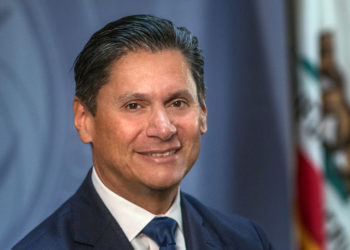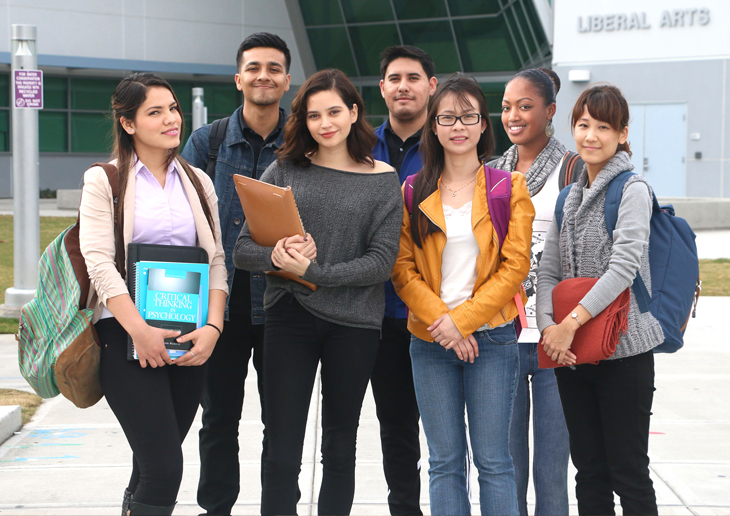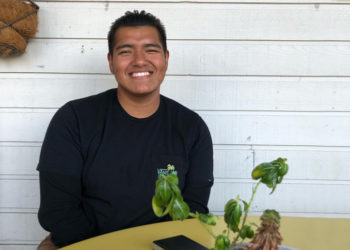
As we head toward the conclusion of another academic year, it’s important to take... Read More about Listening Tour Offers Opportunity to Discuss Vision for Success

Every year, nearly 2.1 million students of all ages enroll at a California community college eager to get the skills they need to enter the workforce, secure an in-demand job and advance their careers. These students are hungry for a better life.
Unfortunately, according to the recently released California Community College #RealCollege Survey, nearly 50% of them are also just hungry.
“Last semester I was working three jobs and it still wasn’t enough to cover gas and food and clothes. This semester, I’m only working two.”
-Jerry, Student, Modesto Junior College
While the prevalence of basic needs insecurity in California among students in public four-year institutions has been documented by both the University of California and the California State University systems, hard data identifying the scope and scale of the problem at the community college level has been lacking.
The recently released California Community Colleges #RealCollege Survey fills this gap by providing needed information to campus leadership and state policymakers who are looking to more effectively support student success.
A joint effort between The Hope Center, the California State Legislature, the California Community Colleges Chancellor’s Office and the Institute for College Access and Success, the survey defines food insecurity as, “the limited or uncertain availability of nutritionally adequate and safe food, or the ability to acquire such food in a socially acceptable manner.”
Some significant findings include:
“The problem is nothing new,” says Colleen Ganley, a basic needs specialist with the California Chancellor’s Office who has been working in the field for nearly 15 years. “Student hunger and unmet basic needs have always existed for low and very low-income students. What is changing is our growing awareness of it.”
Ganley credits this growing awareness on an institutional shift towards a holistic understanding of students and student success and the barriers that stand in the way.
“I think it’s really grounded in Guided Pathways and this move towards recognizing the whole student,” says Ganley. “Barriers to student success don’t just start and stop in the classroom. If we know 50% are food insecure, or that they meet some sort of low-income criteria, we have to consider how that impacts student outcomes. What are the other variables for those students that are impacting their ability to succeed? If our mission is to educate students, then we have to start addressing the full spectrum of obstacles that keep us from doing that.”
“I’m doing everything I can to get my education. The real cost of college education goes beyond tuition. It’s everything else that goes along with being a full-time college student such as watching fuel, against food, where I eat, how much I spend, college supplies, trimming and staying on a very tight budget to literally get through every month. Something, it’s just surviving the week.” –Steve, Student, Modesto Junior College
While rates of basic needs insecurity vary by region and by institution, the report shows that rates of basic needs insecurity are higher for marginalized students, including African Americans and students identifying as LGBTQ. Additionally, students who have served in the military, former foster youth, and formerly incarcerated students are all at greater risk.
In addition to identifying food insecurity as a significant problem across the system, the study also provides important data about housing insecurity and homelessness among California community college students.
“From month to month I was lucky if I was able to get in our rent without being late. That has a psychological effect on students. Not knowing how you’re going to cover your costs of food, or get to school, can be defeating. Even for the savviest of students who have a dream of achieving a college degree, when hit with those barriers, sometimes it’s too much.”
–Jessi, Executive Vice President, Campaign for College Opportunity
According to the survey, which included the responses of almost 41,000 students from 57 California community colleges, 60% of respondents were housing insecure in the previous year, 19% of respondents were homeless in the previous year.
For Ganley, part of the work of this report is to undo the romanticized myth of the starving student who couch surfs from house to house eating Top Ramen.
“Today, that’s not what it looks like,” says Ganley. “It’s not couch-surfing and Ramen. It’s not a choice. It’s a college student who is maybe an adult who is working three jobs, raising kids, and trying to afford to live in California.”
The study also finds that while campus food pantries are becoming more-and-more common, use of public benefits like CalFresh among college students remains low. For instance, the US Government Accountability Office estimates that 57% of students who are food insecure and eligible for SNAP (CalFresh in California) did not collect those benefits.
“My mother is unemployed and my father is a laborer, and so we live in a house over here in this area of Sacramento, and with the cost of living, it’s really expensive and bills can be expensive as well. Sometimes, what my mother and father make is not enough, so I try to do my best to help out whether it be saving money, or just giving it to them.”
–Carlos, Student, Sacramento City College
Taken as a whole, the report paints a startling picture of the barriers facing community college students in California and across the country. But in Ganley’s opinion, as dire as the numbers are, they also provide the insight necessary to start designing solutions.
“As much as we’d like to, we can’t be everything to all students,” says Ganley. “But this data at least helps us identify where to start. If our goal is to meet students where they’re at, we need to come to terms with the fact that they’re living in a car and they’re not eating.”
While Ganley is not optimistic that the federal government will take significant action, she is bolstered by the work her colleagues are doing.
“I’m incredibly proud of what our colleges are trying to do,” says Ganley. “They’re trying to address these issues, all the way up to the presidents. I’m just so proud to see people diving in trying to address these complex issues.
“These are hard issues. Poverty is a hard issue. But our system is a way out of that. That’s why what we do is so important.”

As we head toward the conclusion of another academic year, it’s important to take... Read More about Listening Tour Offers Opportunity to Discuss Vision for Success

Contact your legislators! That’s the message the California Community Colleges... Read More about More Financial Aid for California Community College Students Must Not Wait and You Can Help!

In March “I Can Afford College” launched two in a series of six digital-first... Read More about “I Can Afford College” Campaign’s New Latinx Youth YouTube Series